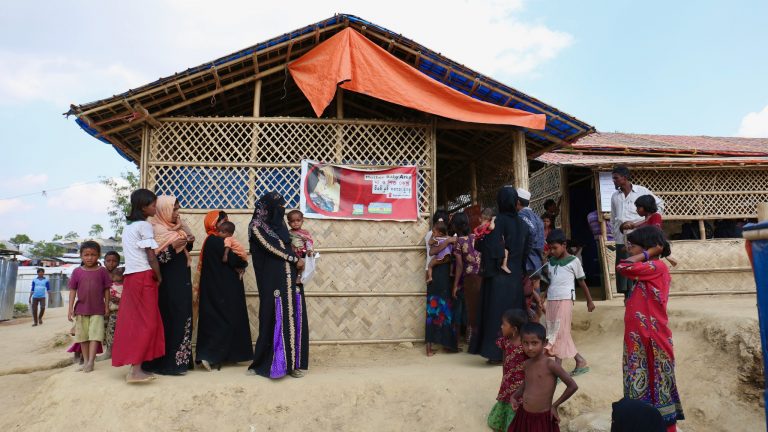World Population Day is celebrated each year on July 11 to “focus attention on the urgency and importance of population issues.” This year, the day points to the unfinished business related to reproductive health and gender equality stemming from the 1994 International Conference on Population and Development. The date is also an opportunity to reflect on the interconnectedness of reproductive health and newborn health.
Kashmera, a midwife in a refugee camp in Cox’s Bazar, Bangladesh, understands the relationship between family planning and newborn health. At the clinic where she works, she sees Rohingya refugees with young children who are pregnant and those who want to avoid getting pregnant again. Since August 2017, more than 700,000 Rohingya refugees have entered Bangladesh fleeing large-scale violence and human rights abuses in Northern Rakhine state, Myanmar. An estimated 900,000 Rohingya refugees are now living in camps or host communities, including an estimated 230,000 women of reproductive age, nearly 30,000 of whom are estimated to be pregnant.

Kashmera counsels a potential family planning client on different contraceptive methods at a Rohingya refugee camp health post in Cox’s Bazar, Bangladesh.
Family planning increases newborn survival and promotes nutrition
Access to family planning and reproductive health improves newborn and child survival, and empowers families to invest more in each child’s care, including access to adequate food and water. Satisfying demand for family planning among the 214 million women who have an unmet need could result in averting 1 in 10 newborn deaths, 1 in 5 child deaths, and 1 in 3 maternal deaths. By increasing the time between pregnancies to roughly three years, women and babies are more likely to survive, and babies have lower risk of adverse birth outcomes like preterm labor or low birthweight. In addition to allowing for birth spacing, family planning can help young women delay pregnancy and avoid unintended pregnancies for older, at-risk women. Further, family planning allows new mothers to focus more on breastfeeding their infants for two years, leading to improved nutrition and development for their children.
Integrating family planning and infant feeding
In October 2017, Save the Children deployed its Emergency Health Unit to set up health posts throughout Ukhia and Teknaf camps in Cox’s Bazar to provide primary health services directly to recently displaced Rohingya refugees. We have integrated family planning services into the primary health packages as an essential component of the emergency health response in Bangladesh and established Mother-Baby Areas to provide infant and young child feeding support for pregnant women and caregivers of children under the age of two. The network of facilities provides services for a population of more than 150,000 Rohingya refugees and members of the Bangladeshi host community.
We saw opportunities to provide better care through integrated services since different clients were visiting different services. As a result, all women and girls of reproductive age now learn about contraception when accessing any services at Save the Children-supported sites in the Rohingya camps, including those mothers seeking care for their children.
To facilitate referrals, Save the Children conducted a workshop where the infant and young child feeding counsellors, midwifes, and family planning assistants explained to one another what their roles were and what services they were able to offer. They each discussed the importance of their services to the overall health of pregnant and lactating women in the Rohingya and host communities.
Providers are more aware of what other services were available for their patients at the same facility and could identify and refer specific clients for additional services. Our Mother-Baby Areas, where infant and young child feeding interventions take place, refer over 300 new family planning clients each month, amounting to almost 25% of the total clients. A similar number of family planning clients are referred to the Mother-Baby Areas for infant and young child feeding services. As the response continues, contraceptive clients also continue to increase, with a notable increase occurring when integrated services began.
For more information about our family planning and infant and young child feeding work in Bangladesh, join a Tech RRT webinar with our program manager, Noyem Uddin, on Wednesday, July 17th (8:00 New York; 15:00 Nairobi; 18:00 Dhaka). Register via email at TechRRT2@InternationalMedicalCorps.org.

